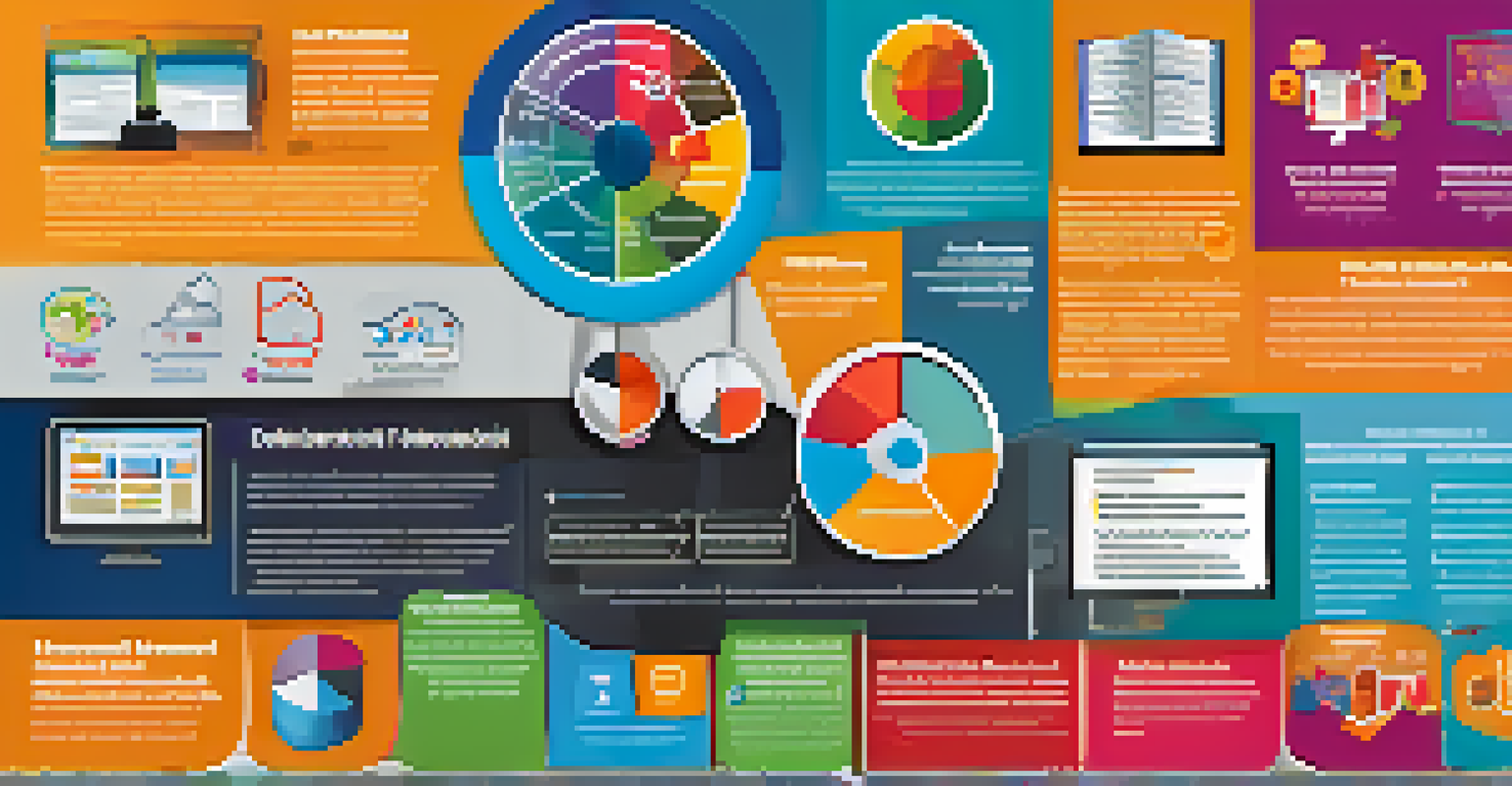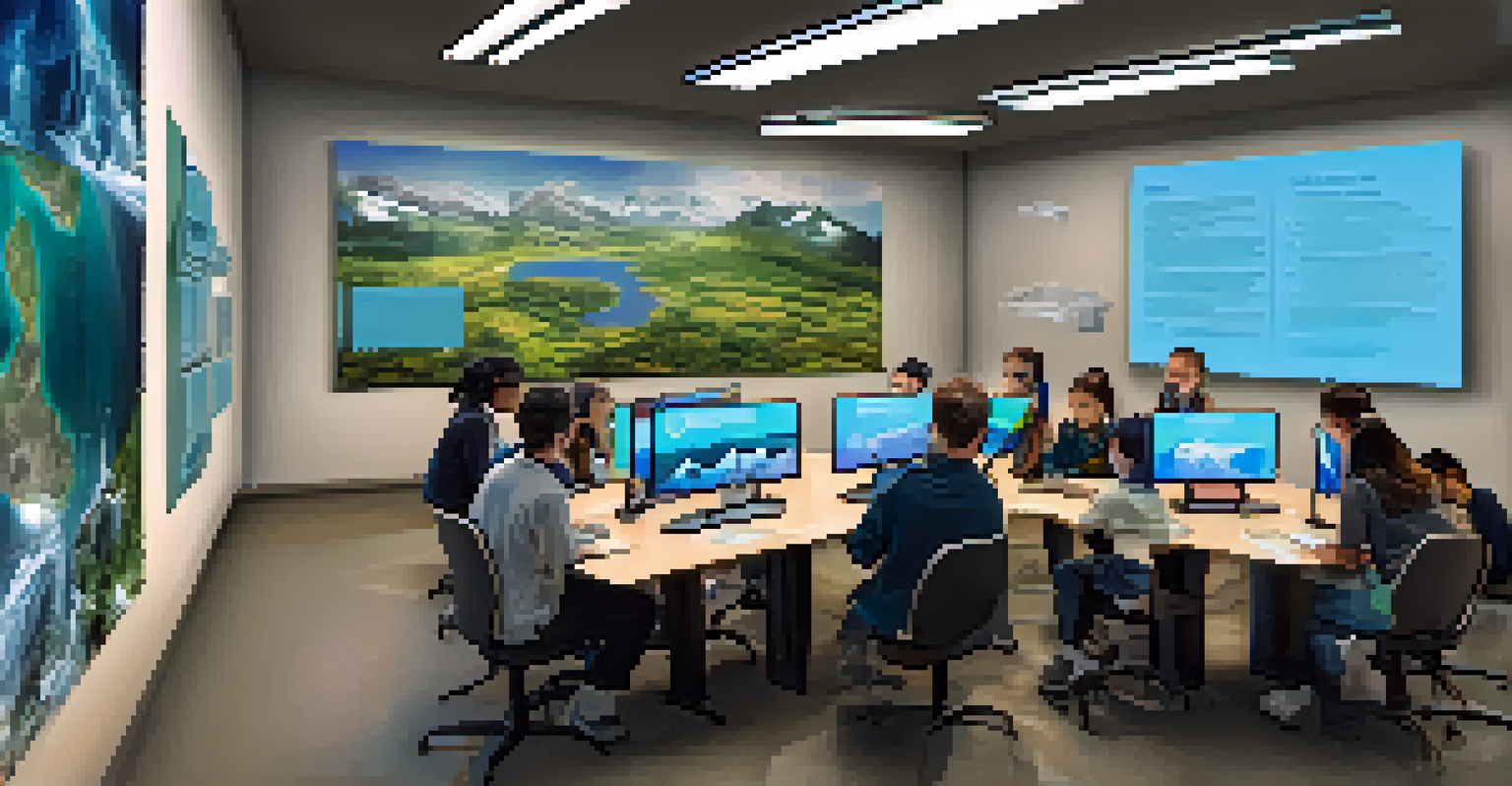Using Case Studies in Transmedia Learning Environments

Understanding Transmedia Learning Environments
Transmedia learning environments integrate multiple media formats to enhance educational experiences. This approach allows learners to engage with content through various platforms, such as videos, podcasts, and interactive games. Imagine a story unfolding across different media, where each piece adds depth to the narrative, making learning more immersive and impactful.
Transmedia learning environments allow learners to engage with content through various platforms, enhancing their educational experiences.
In these environments, learners don't just passively consume information; they actively participate in their own learning journeys. By interacting with content across platforms, they can develop critical thinking and problem-solving skills. For instance, a student might explore a historical event through a documentary, then analyze it further through an interactive timeline.
Understanding how these environments function is crucial for educators and content creators aiming to maximize learning outcomes. The use of case studies within this framework can provide real-world examples that resonate with learners, making the educational experience both relevant and engaging.
The Role of Case Studies in Learning
Case studies serve as powerful pedagogical tools that allow learners to analyze real-world scenarios. They provide context and relevance, helping students connect theoretical concepts to practical applications. By examining specific cases, learners can understand complexities and nuances that traditional teaching methods might overlook.

Moreover, case studies encourage collaborative learning, as students often engage in discussions and group work to dissect these scenarios. This collaboration fosters a sense of community and shared knowledge, enhancing the overall educational experience. Think of it as a group of detectives piecing together clues to solve a mystery, where each student brings their unique perspective.
Transmedia Enhances Learning Experience
Transmedia learning environments engage students through diverse media formats, making education immersive and impactful.
Incorporating case studies into transmedia learning environments enriches the content, making it more dynamic and relatable. The stories behind these cases can be conveyed through various media, allowing students to explore different viewpoints and deepen their understanding of the subject matter.
Benefits of Using Case Studies in Transmedia Learning
Utilizing case studies in transmedia learning offers numerous benefits, including increased engagement and retention of information. When students can see real-life applications of what they are learning, they are more likely to stay interested and remember the material. This engagement is crucial in today's fast-paced educational landscape, where attention spans are shorter than ever.
Case studies encourage collaborative learning, fostering a sense of community and shared knowledge among students.
Additionally, case studies enhance critical thinking skills, as students must analyze, evaluate, and synthesize information from various sources. They learn to approach problems from multiple angles, a skill that is invaluable in both academic and professional settings. It's akin to being a chef who must blend different ingredients to create a harmonious dish; each component plays a vital role.
Finally, case studies can be tailored to meet the diverse needs of learners, allowing for personalized learning experiences. By providing choices in how they engage with content, educators can cater to different learning styles and preferences, making education more inclusive and effective.
Designing Effective Case Studies for Transmedia Learning
Creating impactful case studies for transmedia learning requires careful planning and consideration of learning objectives. It's essential to define what students should gain from the case study and how it aligns with the overall educational goals. A well-designed case study not only presents a problem but also encourages critical analysis and discussion.
Incorporating various media formats can enhance the richness of the case study. For example, a written narrative can be complemented by video interviews, infographics, or interactive simulations, providing multiple entry points for learners. This multimedia approach allows students to engage with the material in ways that suit their individual learning styles.
Case Studies Foster Critical Thinking
Utilizing case studies in education encourages learners to analyze real-world scenarios, enhancing their critical thinking and collaborative skills.
Finally, it's important to create a feedback mechanism that allows students to reflect on their learning experiences. This reflection can take the form of guided questions or discussion prompts, helping learners articulate their thoughts and insights. Just like a coach reviewing game footage with players, this feedback loop can significantly enhance the learning process.
Challenges in Implementing Case Studies
While case studies offer many advantages, implementing them in transmedia learning environments can come with challenges. One significant hurdle is ensuring that all media components are seamlessly integrated. If the various elements don't connect well, it can lead to confusion rather than clarity for the learners.
Another challenge is the time and resources needed to develop high-quality case studies. Creating compelling narratives and gathering relevant multimedia content can be labor-intensive. Educators may find themselves stretched thin, balancing their teaching responsibilities with the demands of case study creation.
Additionally, assessing student engagement and understanding in a transmedia environment can be complex. Traditional assessment methods may not capture the full scope of learning that occurs when students interact with multiple media formats. Finding innovative ways to evaluate student performance is crucial to ensure that educational goals are met.
Case Study Examples in Transmedia Learning
Real-world examples can illustrate the effectiveness of case studies in transmedia learning environments. For instance, a healthcare course might use a case study that follows a patient through their treatment journey, incorporating videos of medical professionals, interactive timelines of treatment milestones, and articles on related health topics. This multifaceted approach allows students to grasp complex medical concepts in a relatable context.
Another example could be in environmental science, where students might explore a case study on climate change effects in different regions. By engaging with documentaries, interactive maps, and expert interviews, learners can understand the global impact of climate change while appreciating local variations. This layered learning experience deepens their critical thinking and empathy toward the subject.
Future of Learning with Technology
Emerging technologies like virtual reality promise to revolutionize case studies in education, making learning more interactive and engaging.
These examples demonstrate the potential of case studies to create rich, engaging learning experiences that resonate with students. By showcasing real-world applications, educators can inspire students to take ownership of their learning and apply their knowledge beyond the classroom.
Future of Case Studies in Transmedia Learning
As technology continues to evolve, the future of case studies in transmedia learning environments looks promising. Emerging technologies, such as virtual and augmented reality, have the potential to transform how case studies are delivered. Imagine students stepping into a simulated environment where they can interact with case study scenarios in real-time, enhancing their learning experience.
Furthermore, the rise of collaborative platforms may enable educators to share and co-create case studies across institutions and disciplines. This collaboration can lead to a wealth of diverse perspectives and innovative approaches to case study design. It's like joining a global think tank where ideas can flow freely and inspire new possibilities.

Ultimately, the integration of case studies in transmedia learning is likely to become more sophisticated, catering to the evolving needs of learners. By embracing these changes, educators can continue to provide engaging and relevant learning experiences that prepare students for the challenges of the future.